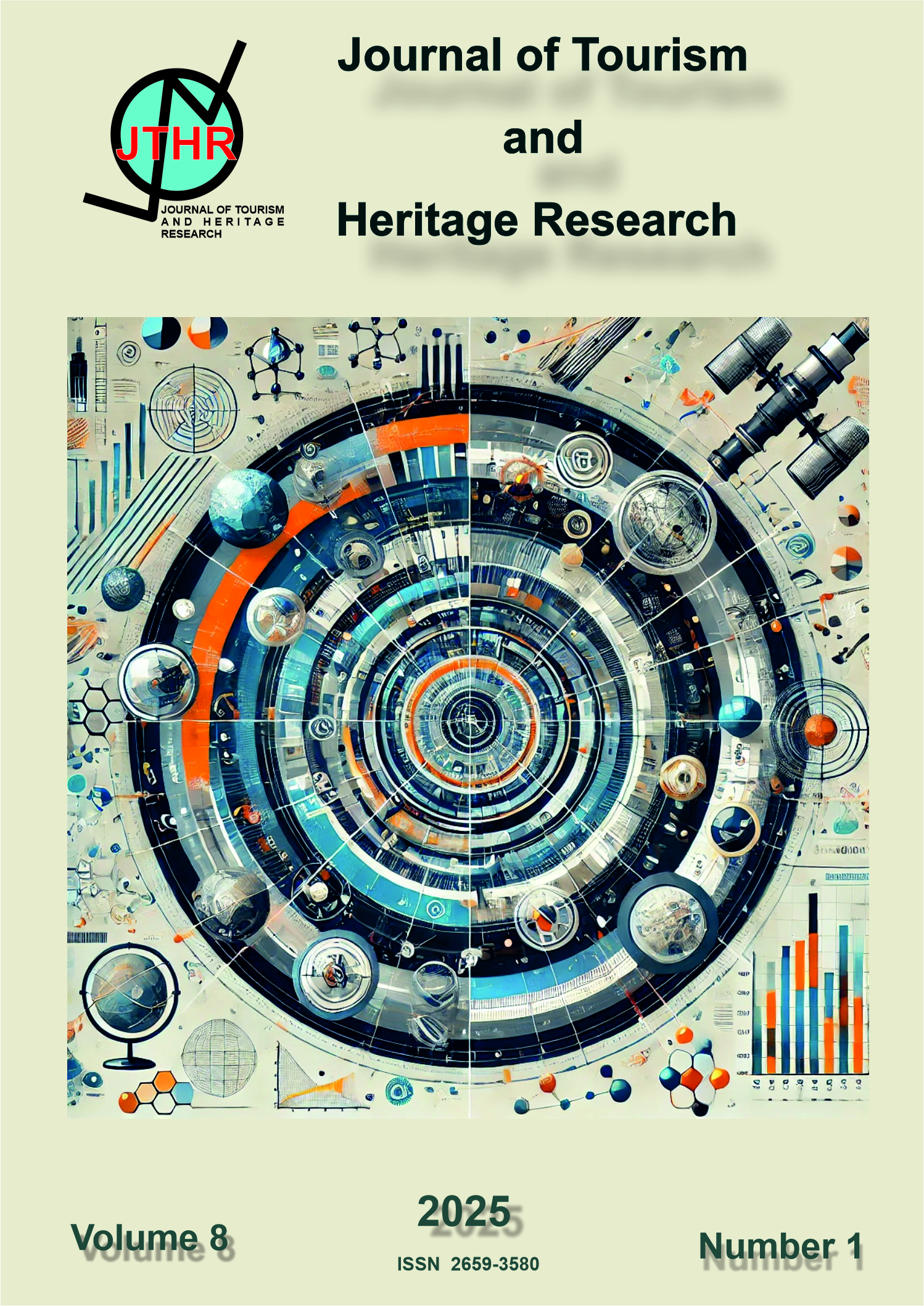Importance of airport economic groups in tourism
Abstract
Airport infrastructure, in its historical development, traces its origins to the first decade of the 20th century, when the Mexican State created military aviation in 1915. Institutional regulations beginning in 1920 have spanned more than 110 years to shape modern airports. Objective: To understand the characteristics and evolution of airport groups, their restructuring, and the economic growth strategies that have enabled their success, as well as their contribution to tourism activity through the mobilization of passengers. Methods: Given that the research is exploratory, it employed the historical method, based on research sources that reference primary sources, and used the analytical method with graphic scope. Results: The Mexican State established the legal framework for private sector participation through the granting of concessions to economic groups to operate the most profitable airports, as well as public participation through its Ministries of National Defense and the Navy.
References
Animal Político. (14 de agosto de 2024). Nace Grupo Aeroportuario Marina, la empresa del Estado que controlará 7 aeropuertos de México. Obtenido de https://animalpolitico.com/politica/grupo-aeroportuario-marina-controlara-7-aeropuertos-mexico#google_vignette
Arellano, C. (7 de abril de 2025). En 20 años, las remodelaciones en el AICM han sido la constante. Obtenido de La Jornada: https://www.jornada.com.mx/2025/04/07/politica/013n1pol#:~:text=En%20los%20%C3%BAltimos%2020%20a%C3%B1os,apertura%20de).
Arrazola, D. (1992). Aeromar la buena y la mala. Expansión, 46-50.
De Luna, T. (24 de septiembre de 2024). De la seguridad a la administración: Fuerzas Armadas controlan 19 aeropuertos . Obtenido de Expansión: https://expansion.mx/empresas/2024/09/24/que-aeropuertos-son-operados-por-fuerzas-armadas-mexico
De Rus, G., & Javier, C. (2003). Economía del transporte. Antoni Bosch.
EQUIPAR. (2019). Inicia GAP operaciones del aeropuerto de Kingston. Obtenido de https://www.revistaequipar.com/mexico/contenido-editorial/inicia-gap-operaciones-del-aeropuerto-de-kingston
Expansión. (1984). Las líneas aéreas: no más vuelos en picada. Expansión, 57.
Flores, A. (1988). El enredo de Aeroméxico. Expansión, 36-41.
Giraldo, C., Velderrama, A., & Zapata, S. (2015). Las infraestructuras aeroportuarias: tipo de propiedad y su relación con la eficiencia. Revista Ingenierías Universidad de Medellín, 179-194.
Infobae. (19 de marzo de 2022). Cuántos aeropuertos tiene México y cuáles son los más importantes. Obtenido de Infobae: https://www.infobae.com/america/mexico/2022/03/19/cuantos-aeropuertos-tiene-mexico-y-cuales-son-los-mas-importantes/
Juárez, A. (12 de agosto de 2020). Aeropuertos de México pierden 90% de pasajeros en primer semestre de 2020. Obtenido de El Ceo: https://elceo.com/negocios/aeropuertos-de-mexico-pierden-90-de-pasajeros-en-primer-semestre-de-2020/
Marcotrigiano, L. (2011). Discusión del concepto de "activo" dentro del Marco Conceptual de las Normas Internacionales de Información Financiera . Actualidad Contable Faces, 72-85.
Martínez, J. (1990). Líneas aéreas: por un cachito de cielo. Expansión, 36-46.
Martínez, J. (1992). Dondé esta el negocio. Expansión, 46-50.
Monjaras, J. (1992). Aeropuertos por no poder atenderlos. Expansión, 55-57.
OMA. (27 de mayo de 2025). OMA. Obtenido de https://www.oma.aero/es/
Ortiz, M. (02 de diciembre de 2023). ¿Viajarás? Conoce los aeropuertos internacionales más importantes de México y dónde están. Obtenido de Milenio: https://www.milenio.com/estados/aeropuertos-internacionales-de-mexico-cuales-son-y-donde-estan
Ramírez, D., & Clavijo, D. (2011). Controlador aéreo, entrevista a Héctor González Weeks. Expansión, 71-74.
Redacción A21. (3 de noviembre de 2023). Anuncia incremento de la TUA para noviembre. Obtenido de A21: https://a21.com.mx/aeropuertos/2023/11/03/anuncia-aifa-incremento-de-la-tua-para-noviembre-2/#:~:text=El%20GAFSACOMM%20es%20una%20empres
Rico, O. (2011). La concentración económica en el aerotransporte comercial de pasajeros, después de la regulación. Publicación técnica. México: Secretaría de Comunicaciones y Transporte/Instituto Mexicano del Transporte.
Sánchez, B. (2011). Sistemas aeroportuario, servicio público e iniciativa privada. México: CEPAL.
Santiago, J. (25 de febrero de 2021). Pandemia afectó a aeropuertos. Obtenido de El Economista: https://www.eleconomista.com.mx/mercados/Pandemia-afecto-a-aeropuertos-20210224-0116.html
Secretaría de Marina. (17 de octubre de 2024). Comunicado de Prensa Núm. 160/2024.
Thomson, J. (1976). Teoría económica del transporte. Alianza Editorial.

This work is licensed under a Creative Commons Attribution 4.0 International License.
1.The works published in this magazine are subject to the following terms: Tourism Research Association (the publisher) preserves the patrimonial rights (copyright) of the published works, and favors and allows the reuse of them under the license of use indicated in point 2.
© Investur, 2017
2.The works are published in the electronic edition of the magazine under a Creative Commons Attribution-NonCommercial-NoDerivative 3.0 Spain (legal text) license. They can be copied, used, disseminated, transmitted and publicly displayed, provided that: i) the authorship and the original source of their publication (journal, editorial and URL of the work) are cited; ii) are not used for commercial purposes; iii) the existence and specifications of this license are mentioned.
3. Self-file conditions. Authors are allowed and encouraged to disseminate electronically the pre-print versions (version before being evaluated) and / or post-print (version evaluated and accepted for publication) of their works before publication, since it favors their circulation and earlier dissemination and with it a possible increase in its citation and scope among the academic community.


